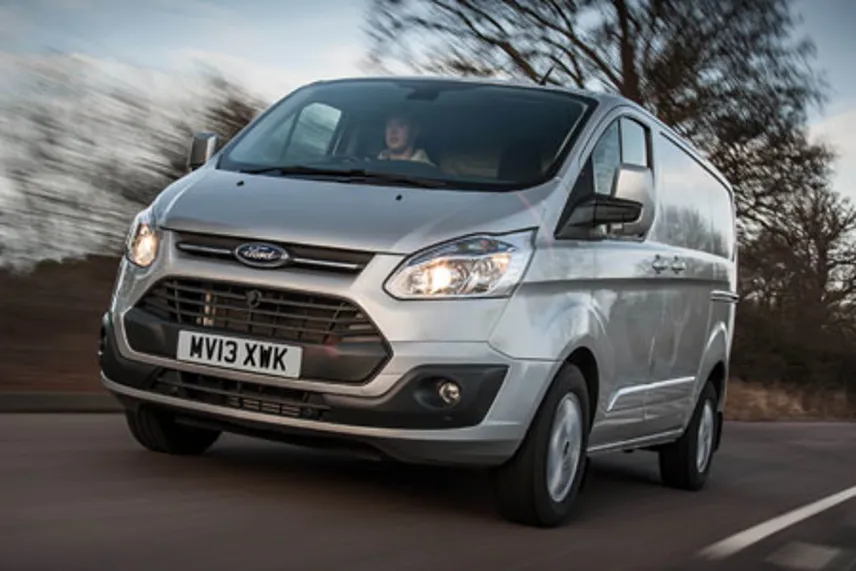Review
Fuel economy is becoming a valuable marketing tool for van manufacturers. Fleet operators running company cars will be well aware of the Econetic, Bluemotion and Ecoflex labels among others, knowing that car manufacturers use these badges for the most efficient models in the range.
The terminology has also crept into the van market as manufacturers also have targets to cut average CO2 emissions, and a few months after the new Ford Transit Custom arrived on the market, an Econetic version has appeared.
Using a 100bhp version of the 2.2-litre TDCi engine, the Custom Econetic offers significant improvements in fuel economy and lower CO2 emissions compared with its predecessor, so could be a more desirable choice in the range for fleets wanting to minimise fuel spend or to comply with any overall environmental policy that takes into account vehicle emissions.
For its part, the Transit Custom Econetic probably offers the most sophisticated off-the-shelf fuel-saving features of any conventional van.
As standard, it comes with Acceleration Control, an innovative new technology that limits the acceleration to levels achievable when the vehicle is fully laden (with a maximum payload of 1,295kg in this particular model), enabling significant fuel savings when the vehicle is unladen or part-laden.
Ford says field tests show this system can reduce real-world fuel consumption by 4% to 15% and cut wear and tear on brakes, tyres and other components.
The Econetic model also offers standard stop-start that, according to Ford, can reduce fuel consumption and CO2 emissions by up to 10% in urban driving.
Additional fuel-saving features include a switchable 70mph speed limiter (disabled by pressing the Eco button on the dashboard although it is always activated by default on start-up), unique engine calibration, a coolant bypass valve for quicker warm-up, optimised gearing with a 6% longer final drive ratio, low rolling resistance tyres and aerodynamic wheel trims.
Customers can also specify fixed speed limiters for speeds of 56mph, 62mph and 70mph to suit their own operating requirements as an optional feature.
But Econetic isn’t the only low-CO2 technology offered on the van market, so we need to investigate what makes the Transit so special.
For a start, the exceptional 46.3mpg and 162g/km ratings are achieved only with the optional 62mph speed limiter chosen. In standard form with maximum speed limited to 70mph in Eco mode, the figures are 44.8mpg and 166g/km.
These figures are almost identical to the Volkswagen Transporter Bluemotion, and given all of the investment Ford has put into the new Transit programme, you would be forgiven for thinking that those figures are nothing special.
However, unlike the Transporter, which flies the Bluemotion flag only in T27 guise (other variants are available with the second-tier Bluemotion Technology badge), the Transit Custom Econetic is available in three weight variants and two wheelbase options.
Our test vehicle was the 3.1 tonne gross vehicle weight (GVW) variant, and, as usual for Ford test vans, was supplied with a half load in the back so we could get a true feel for a real-world driving experience.
The cab has a much more hi-tech feel than rivals, with instruments, switches and controls familiar to anyone who has driven anything from Ford’s current car range, and a steering wheel that feels very pleasant as well as looks good.
Our van was fitted with an optional three-point plug socket so any electronic items the driver might need for work – perhaps even a laptop computer – could be kept charged while on the job.
Although our test van had a full steel bulkhead, I had plenty of room to find a comfortable driving position.
In the Volkswagen Transporter I drove a few weeks ago, I could only move the seat base back far enough by putting the seatback in a more upright position because of its bulkhead – hardly ideal for a vehicle that will be someone’s place of work.
The Custom Econetic also drives well in terms of steering response, body control and engine refinement (the latter aided in no small part by the optional full steel bulkhead).
But in the case of the 100bhp Econetic, the downside of the fuel economy achieved thanks to the higher gearing (we regularly had the trip computer showing close to 40mpg), is a tardy response in fifth and sixth.
It is less powerful than the Transporter Bluemotion, which comes with a 114bhp engine, but overall has more driver appeal.
But if your car is overtaken at high speed by a white Transit Custom – as can often be the case with vans – I can guarantee it won’t be the Econetic.
















